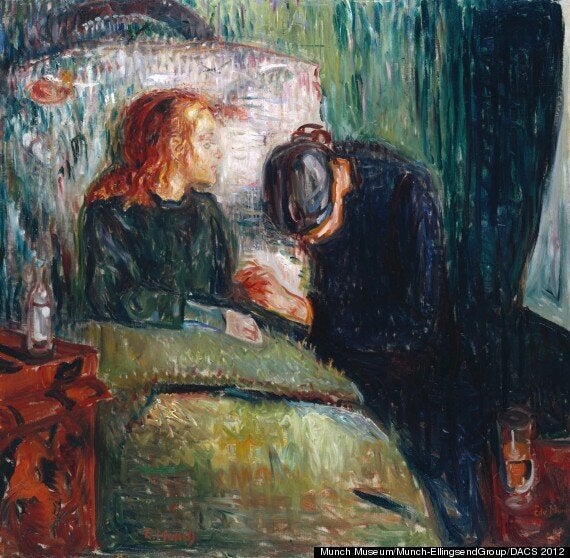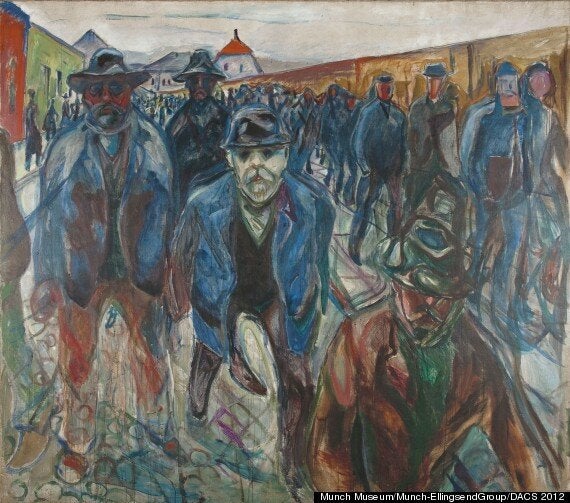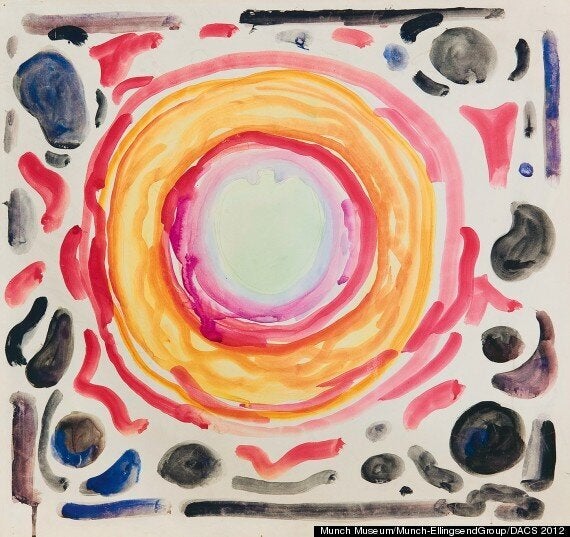
For a great many people, Edvard Munch: The Modern Eye will be a chance to decide if they should care about the artist for any other reason than the fact he painted the most famous artwork in the world.
It’s rare that a painter of Munch’s reputation is eclipsed so thoroughly by a single piece, but then it’s rare for a single piece to be as well known outside the art world as The Scream – not even the Mona Lisa comes close.
So let’s dispense of the gaping-mouthed elephant in the room right away. There is no Scream at the Tate Modern. But there are plenty of other paintings that share the characteristics of it that we find so beguiling.

The Sick Child (1907)
Plenty of wrought, tortured figures, plenty of unsettling swirls of nauseating colours, and, above all, plenty of opportunity for psychological voyeurism.
An opening room of stern-faced self-portraits sets the tone for an exhibition that plays with the idea that Munch is supposed to have poured himself into his paintings, how we're meant to get a glimpse of his psyche in every brush stroke.
The self-portraits - both the paintings and the photography, which he pursued as an amateur - reveal an artist at once fascinated and repulsed by himself. In only one does he dare look outwards rather than away from the viewer’s gaze, and in that, a skeleton arm runs along the bottom of the painting in a bizarre gesture of defensiveness.
Munch’s life was famously filled with anguish from the beginning. His Mother died when he was five and his sister when he was 14, leaving him to be raised by an overly pious father.

Workers on Their Way Home (1913-14)
The early works see him supposedly working through some of these early traumas. The Sick Child (1907 and reworked again in 1925), a vision of his sister ill in bed, is particularly moving, while The Kiss (1897) hints at the darkness that would emerge in his later work. In it a couple’s face melt into one formless blob as they embrace. It could almost be romantic, but of course with Munch, it’s anything but.
I liked these early works better, before the paintings took on something of a self-conscious morbidity. Landscape And Dead Bodies (1912) and Death Row (1915) are macabre in the extreme. In his later years, Munch’s skill as a painter grew but he lost something of the subtle touch he started out with.
But then in its place grows a brilliant cinematic quality to the paintings that you don’t get with other artists – take for example Workers On Their Way Home, a depiction of ghoul-like workmen who seem to almost loom out of the canvas.
The way he reduces the space around his figures to create an intense claustrophobia, the woozy angles he selects to glare at them, the way he frames everything all suggest he’d have been a great movie director had things gone a little differently.
In fact, one of the show’s most enjoyable surprises is an amateur film Munch made in 1927. You expect something sinister or tense but in fact it’s a rather jaunty affair – the first and only sense you get of an artist enjoying himself.

The Artist's Injured Eye: Optical Illusion from the Eye Disease (1930)
As the show concludes, I found my sympathy for Munch’s open wounds waver a little. The death of a sibling is one thing, but here’s a man who felt so troubled by a minor scuffle with a young artist, he felt the need to paint and repaint the scene from various angles, decades apart.
But then, just as you’ve written him off as some kind of wet blanket with a phenenomal gift for melodrama, you walk into a room full of paintings Munch completed after suffering a hemorrhage in his right eye in 1930.
It left him almost entirely blind, but rather than allow it cause his work to deteriorate, he embarked on a period of experimentation, painting spheres of light and shape left visible by his injury. It’s the defiance behind these paintings, rather than the works themselves, that is so affecting.
Munch died in 1944, a week after his 80th birthday, not long after the Nazi party came to power and labelled his work 'degenerate'. Much of these paranoid, alcoholic final years was spent painting himself as he had done so many times before, trying, you sense, to find a impression of himself he felt satisfied with.
Wondering around Edvard Munch: The Modern Eye you go on a similar journey of trying to understand this most loaded of art figures - an undertaking, it turns out, that is helped not hindered by the absence of his most famous masterpiece.
Edvard Munch: The Modern Eye runs 28 June - 14 October 2012, £14, concessions available.
